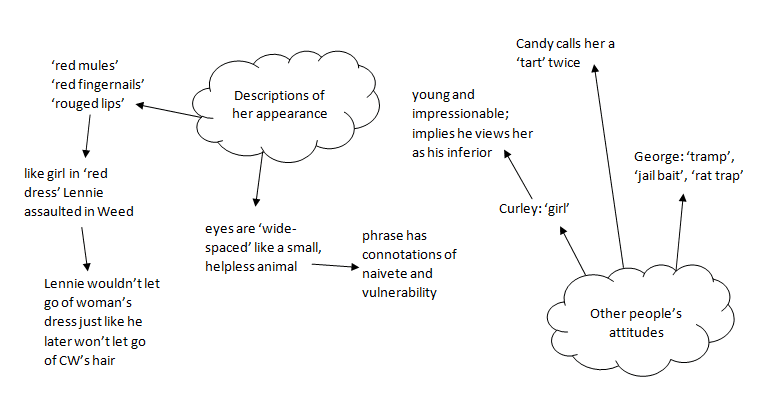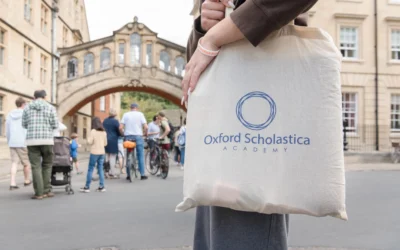How to Write the Perfect Essay

If you decide to study English at university, it’s going to involve a lot of essay writing. It’s a challenging skill to master because it requires both creativity and logical planning, but if you ensure you do the following whenever you write an essay, you should be on the way to success.
This skill is also a key focus in our Oxford summer courses, where essay writing is honed to perfection.
Step 1: Plan
This may sound time-consuming, but if you make a really good plan, you’ll actually save yourself time when it comes to writing the essay, as you’ll know where your answer is headed and won’t write yourself into a corner.
Don’t worry if you’re stuck at first! Jot down a few ideas anyway and chances are the rest will follow. I find it easiest to make a mind map, with each new “bubble” representing one of my main paragraphs. I then write quotations which will be useful for my analysis around the bubble.
For example, if I was answering the question, “To what extent is Curley’s wife portrayed as a victim in Of Mice and Men?”, I might begin with a mind map that looks something like this:

You can keep adding to this plan, crossing bits out and linking the different bubbles when you spot connections between them. Even though you won’t have time to make a detailed plan under exam conditions, it can be helpful to draft a brief one, including a few key words, so that you don’t panic and go off topic when writing your essay.
If you don’t like the mind map format, there are plenty of others to choose from: you could make a table, a flowchart, or simply a list of bullet points.
Step 2: Have a clear structure
Think about this while you’re planning: your essay is like an argument or a speech. It needs to have a logical structure, with all your points coming together to answer the question.
Start with the basics! It’s best to choose a few major points which will become your main paragraphs. Three main paragraphs is a good number for an exam essay, since you’ll be under time pressure.
If you agree with the question overall, it can be helpful to organise your points in the following pattern:
- YES (agreement with the question)
- AND (another YES point)
- BUT (disagreement or complication)
If you disagree with the question overall, try:
- YES (agreement with the question)
- BUT (disagreement or complication)
- AND (another BUT point)
For example, you could structure the Of Mice and Men sample question, “To what extent is Curley’s wife portrayed as a victim in Of Mice and Men?”, as follows:
- YES (descriptions of her appearance)
- AND (other people’s attitudes towards her)
- BUT (her position as the only woman on the ranch gives her power as she uses her femininity to her advantage)
If you wanted to write a longer essay, you could include additional paragraphs under the YES/AND categories, perhaps discussing the ways in which Curley’s wife reveals her vulnerability and insecurities, and shares her dreams with the other characters. Alternatively, you could also lengthen your essay by including another BUT paragraph about her cruel and manipulative streak.
Of course, this is not necessarily the only right way to answer this essay question – as long as you back up your points with evidence from the text, you can take any standpoint that makes sense.

Step 3: Back up your points with well-analysed quotations
You wouldn’t write a scientific report without including evidence to support your findings, so why should it be any different with an essay? Even though you aren’t strictly required to substantiate every single point you make with a quotation, there’s no harm in trying.
A close reading of your quotations can enrich your appreciation of the question and will be sure to impress examiners. When selecting the best quotations to use in your essay, keep an eye out for specific literary techniques. For example, you could highlight Curley’s wife’s use of a rhetorical question when she says, a”n’ what am I doin’? Standin’ here talking to a bunch of bindle stiffs.” This might look like:
The rhetorical question “an’ what am I doin’?” signifies that Curley’s wife is very insecure; she seems to be questioning her own life choices. Moreover, she does not expect anyone to respond to her question, highlighting her loneliness and isolation on the ranch.
Other literary techniques to look out for include:
- Tricolon – a group of three words or phrases placed close together for emphasis
- Tautology – using different words that mean the same thing: e.g. “frightening” and “terrifying”
- Parallelism – ABAB structure, often signifying movement from one concept to another
- Chiasmus – ABBA structure, drawing attention to a phrase
- Polysyndeton – many conjunctions in a sentence
- Asyndeton – lack of conjunctions, which can speed up the pace of a sentence
- Polyptoton – using the same word in different forms for emphasis: e.g. “done” and “doing”
- Alliteration – repetition of the same sound, including assonance (similar vowel sounds), plosive alliteration (“b”, “d” and “p” sounds) and sibilance (“s” sounds)
- Anaphora – repetition of words, often used to emphasise a particular point
Don’t worry if you can’t locate all of these literary devices in the work you’re analysing. You can also discuss more obvious techniques, like metaphor, simile and onomatopoeia. It’s not a problem if you can’t remember all the long names; it’s far more important to be able to confidently explain the effects of each technique and highlight its relevance to the question.

Step 4: Be creative and original throughout
Anyone can write an essay using the tips above, but the thing that really makes it “perfect” is your own unique take on the topic. If you’ve noticed something intriguing or unusual in your reading, point it out – if you find it interesting, chances are the examiner will too!
Creative writing and essay writing are more closely linked than you might imagine. Keep the idea that you’re writing a speech or argument in mind, and you’re guaranteed to grab your reader’s attention.
It’s important to set out your line of argument in your introduction, introducing your main points and the general direction your essay will take, but don’t forget to keep something back for the conclusion, too. Yes, you need to summarise your main points, but if you’re just repeating the things you said in your introduction, the body of the essay is rendered pointless.
Think of your conclusion as the climax of your speech, the bit everything else has been leading up to, rather than the boring plenary at the end of the interesting stuff.
To return to Of Mice and Men once more, here’s an example of the ideal difference between an introduction and a conclusion:
Introduction
In John Steinbeck’s Of Mice and Men, Curley’s wife is portrayed as an ambiguous character. She could be viewed either as a cruel, seductive temptress or a lonely woman who is a victim of her society’s attitudes. Though she does seem to wield a form of sexual power, it is clear that Curley’s wife is largely a victim. This interpretation is supported by Steinbeck’s description of her appearance, other people’s attitudes, her dreams, and her evident loneliness and insecurity.
Conclusion
Overall, it is clear that Curley’s wife is a victim and is portrayed as such throughout the novel in the descriptions of her appearance, her dreams, other people’s judgemental attitudes, and her loneliness and insecurities. However, a character who was a victim and nothing else would be one-dimensional and Curley’s wife is not. Although she suffers in many ways, she is shown to assert herself through the manipulation of her femininity – a small rebellion against the victimisation she experiences.
Both refer back consistently to the question and summarise the essay’s main points. However, the conclusion adds something new which has been established in the main body of the essay and complicates the simple summary which is found in the introduction.

By Hannah Patient
Hannah is an undergraduate English student at Somerville College, University of Oxford, and has a particular interest in postcolonial literature and the Gothic. She thinks literature is a crucial way of developing empathy and learning about the wider world. When she isn’t writing about 17th-century court masques, she enjoys acting, travelling and creative writing.
Recommended articles
A Day in the Life of an Oxford Scholastica Student: The First Monday
Hello, I’m Abaigeal or Abby for short, and I attended Oxford Scholastica’s residential summer school as a Discover Business student. During the Business course, I studied various topics across the large spectrum that is the world of business, including supply and...
Mastering Writing Competitions: Insider Tips from a Two-Time Winner
I’m Costas, a third-year History and Spanish student at the University of Oxford. During my time in secondary school and sixth form, I participated in various writing competitions, and I was able to win two of them (the national ISMLA Original Writing Competition and...
Beyond the Bar: 15 Must-Read Books for Future Lawyers
Reading within and around your subject, widely and in depth, is one of the most important things you can do to prepare yourself for a future in Law. So, we’ve put together a list of essential books to include on your reading list as a prospective or current Law...


